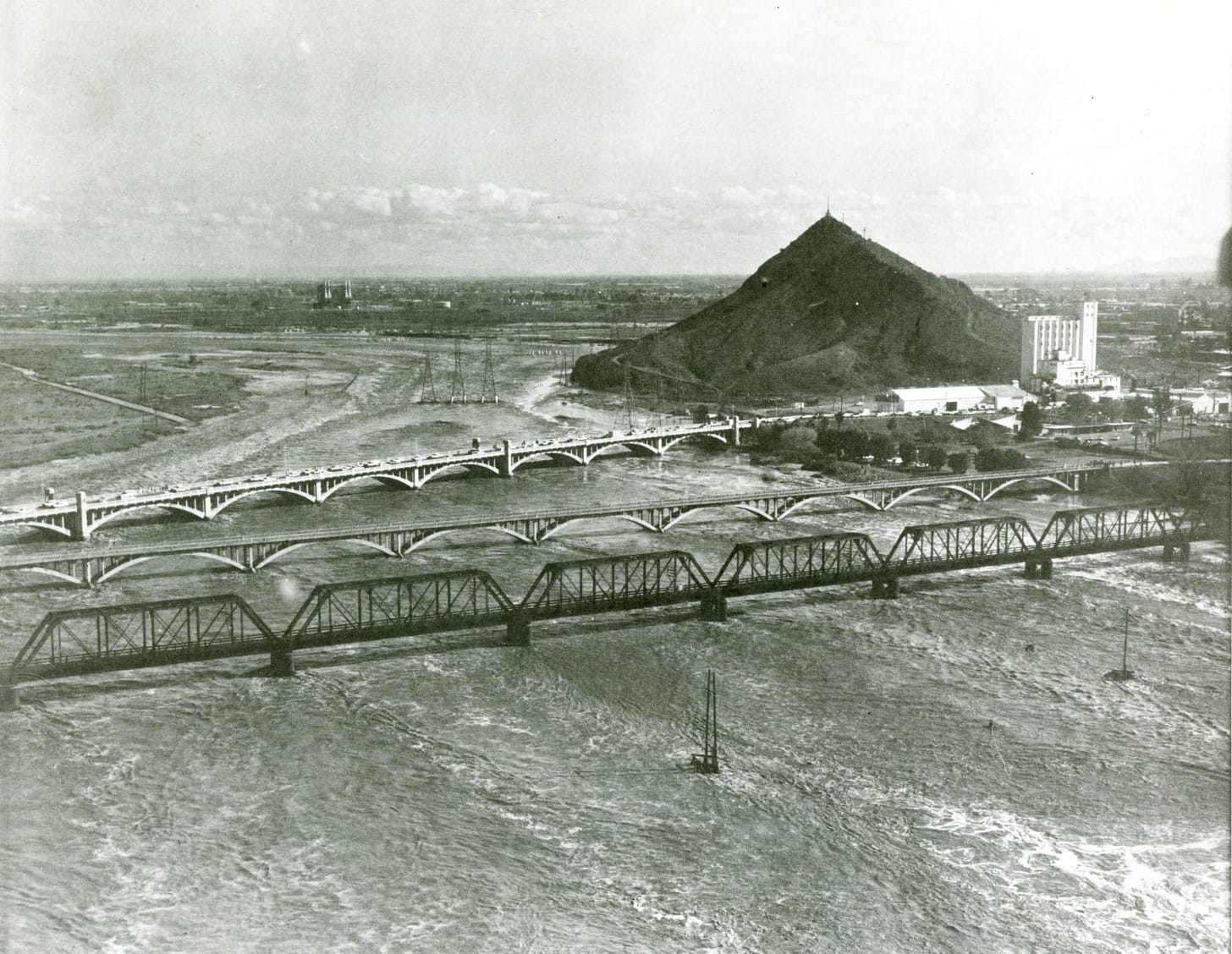The Desert Wasn't Always This Hot: Lessons That Changed Everything for Me
Urban sprawl, heat islands, and what I’m doing differently with Uba, my conservation-centered homestead.
Now let’s get into the fun part!! This is where I get real excited—so strap in, we’re going on a ride.
I’ve always been an Arizona girl.
Sure, I was born in Memphis and spent many of my summers in Mississippi on my family’s land, but the desert? The desert always had me.
Even during my externship in Florida—six humid months of swampy air—I never once thought, “Maybe I could live here.”
Nope. I’d rather endure months of 100+ degree heat in Phoenix than live anywhere that requires four showers a day just to function.
But here’s the thing that really grabbed my curiosity: the heat. Specifically, the question—
“How did people live here before central air conditioning?”
I remember asking my dad this. He’s lived here most of his life. When he told me that central AC didn’t become common until the 1970s, I was floored.
Like… how did y’all survive the dark ages?!
His answer was simple—but it lit a spark in me:
“It wasn’t this hot back then.”
Wait, what?
That comment took me down a rabbit hole. He explained how it wasn’t just global warming—it was the heat trapping from concrete and asphalt, urban sprawl, water overuse, rerouted rivers… decades of development killing the desert in the name of “progress.”
He may not have known it, but that one sentence—“It wasn’t this hot back then”—changed everything for me.
It gave me context. Not that summers were breezy and cool, but that:
You could escape the heat under a tree.
There were more open fields and farms instead of heat-holding asphalt.
The nights brought relief.
And summer didn’t stretch six months long.
That conversation shifted how I saw my home state. I started camping more, hiking more, learning about indigenous building techniques, and paying closer attention to the desert’s history, challenges, and beauty.
I began to understand how people didn’t just survive here—they built communities, cultivated land, and found ways to live with the desert, not against it.
And that’s when my love deepened. Because the desert is poetry.
It’s the story of resilience, adaptation, and quiet triumph. No matter how harsh the conditions, something is always growing.
What’s the Plan for Uba?
Told you I’d get excited. So let me get back on track.
Over the years, I’ve poured time into learning about land restoration, desert conservation, and regenerative practices that make sense for this climate.
This isn’t about forcing lush greenery onto a cactus-filled landscape. It’s about working with what already wants to grow here.
Here are some of the projects, people, and programs that have deeply inspired my approach to Uba:
The UN Environment Programme in Kollo, Niger, where global and local groups are helping restore forests and soils in desert regions.
Learn moreThe UNCCD’s work on global desertification and the importance of regenerative land management.
Read moreCalifornia Wildlife Conservation Board – Desert Conservation Program, focused on protecting fragile desert ecosystems.
Program detailsDr. Michael Kotutwa Johnson’s work in Arizona on indigenous knowledge and sustainability.
Independent creators like:
Neka (A Fellow Homesteader)
Both are restoring 10 acres in Northern Arizona using Gabion Walipini structures, Zuni bowls, swales, and other ancestral conservation techniques.
All of this has fueled my own vision. The more time I spend outside, the more I see the ripple effects of our decisions.
One memory that sticks: seeing the Salt River flow into Phoenix as a kid. Today? It’s dammed in Tempe, redirected to canals to support agriculture and urban expansion. Tempe Town Lake may be cool to some, but I can’t help but wonder—
What did we trade for it?
What will that trade-off cost us long-term?
People justify it by pointing to flood control.
But I can’t help asking a different question:
“Why did we build a city on the river?”
Being close to water doesn’t mean you have to dominate it. Human hubris, in my opinion, is always the loudest voice in the room.

What I’m Creating with Uba
Uba is my personal act of rebellion—and love.
It’s a chance to take everything I’ve learned and apply it with care and intention.
My plan includes:
Zuni bowls to slow and sink water runoff
Swales and berms to catch and redirect rainfall
Indigenous planting techniques rooted in the rhythm of the land
Responsible animal husbandry that supports soil health and sustainability
I want to build my own little sustainable paradise.
Not to run from the world—but to be an active part of healing it.
This isn’t just about my home—it’s about legacy.
For my family. For my future community. And for Arizona.
What’s Next
In the next few entries, I’ll be diving into the preparation process—what it’s really taken to get to this point.
There’s a lot happening behind the scenes, and I’ll be sharing updates on where I am in the journey (some big ones are coming soon 👀).
If you’ve made it this far—thank you.
This story isn’t just mine anymore.







Loving this story!! Keep writing!
Love this keep writing ❤️